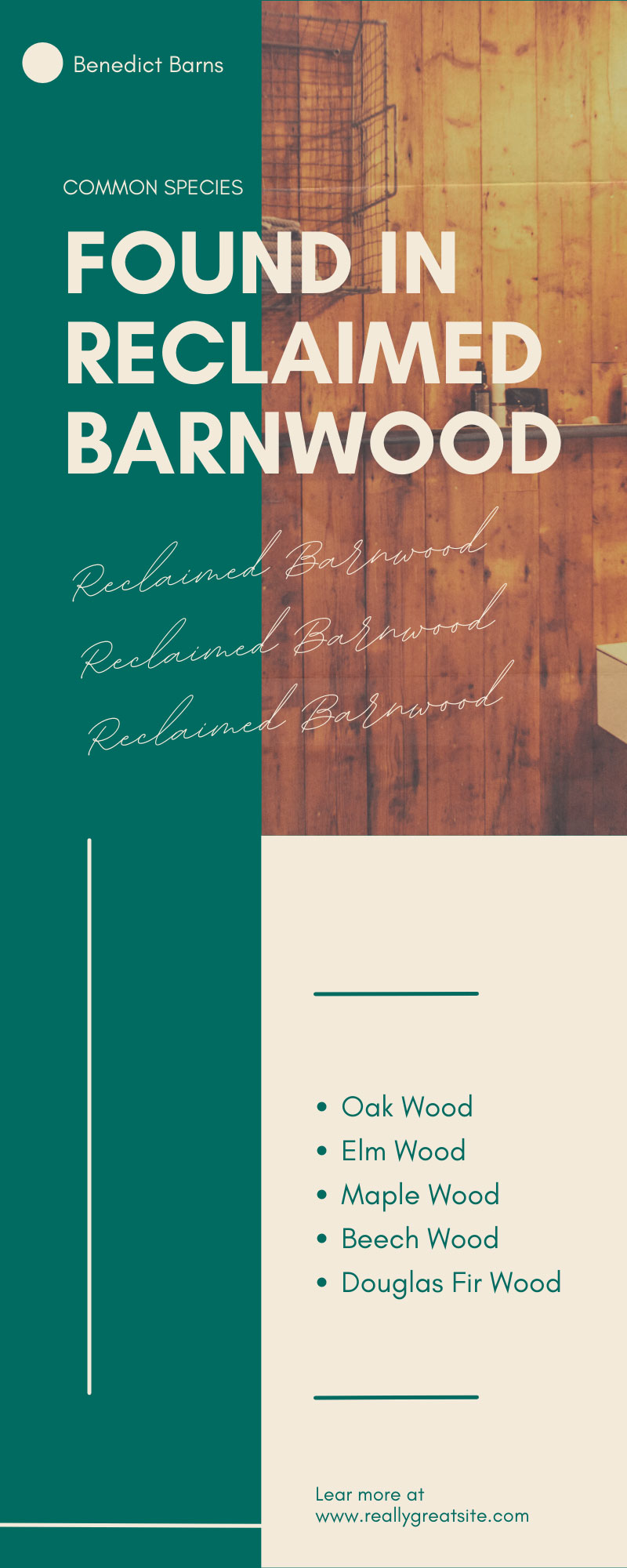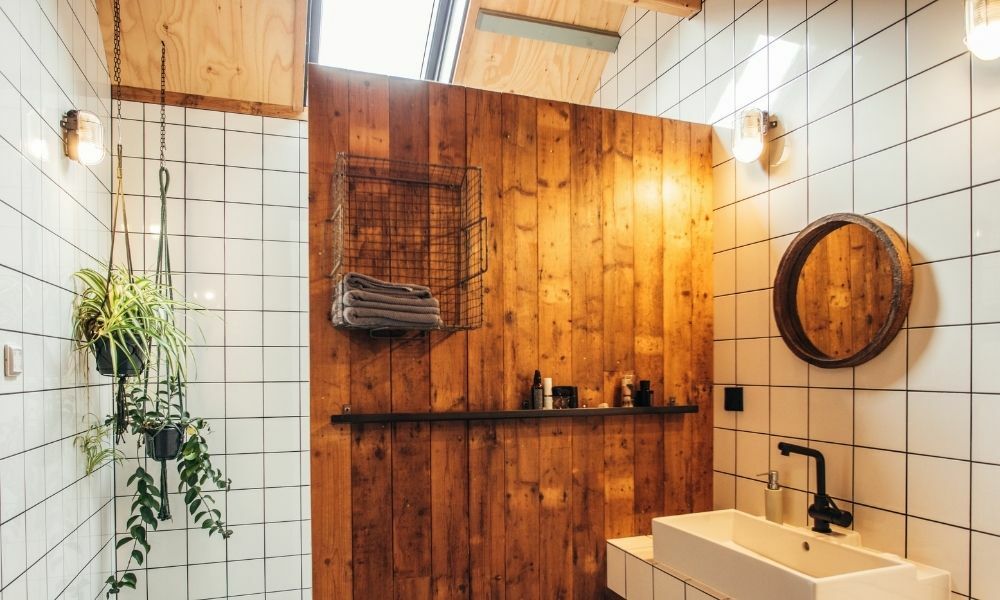Because of how similar boards of reclaimed barnwood can be, both in appearance and function, they tend to be clumped into the same category regarding species. Because all this wood is reclaimed from old barns that are decades of years old, it can be difficult to distinguish the varieties of wood if you don’t know the exact history of the structure it came from and the area around it. Many of the forests reclaimed wood initially comes from are no longer in existence, but to give you an idea of what kind of wood you’re working with, here are some of the common species found in reclaimed barnwood.
Reclaimed Wood Characteristics
First, we should talk a bit about the characteristics reclaimed wood takes on so that you don’t accidentally confuse them as an indication of the reclaimed wood’s species. Barnwood suppliers deal with reclaimed wood that is decades or even centuries old, and is typically grown timber originating from virgin forests. These forests had been completely untouched and given hundreds of years to thrive, as opposed to replanted forests which are harvested soon after maturing.As a result of its age, the wood has undergone a lot of wear and tear, naturally air drying, and enduring the weather for a long time. These factors contribute to its unique rustic appearance and its qualities as an incredibly strong and durable wood regardless of its species. This makes most reclaimed wood seem fairly uniform, often being heavily weathered and full of knots that are considered a stylistic benefit but can’t be used to identify the wood’s original identity. Instead, to identify the species, you should examine the characteristics of the wood’s graining, color, growth ring density, and whether it is a hardwood or softwood. These are the key characteristics that will hint towards the reclaimed wood’s origin.
Oak Wood
Oak wood is probably the most known species of wood thanks to its prevalence and popularity. Regarding reclaimed wood, oak has been most often found in the heavy timbers and siding planks of old barns. Oak wood is characterized as appearing as trees or shrubs, and approximately 600 species of oak have been identified within its native environment of the northern hemisphere. While oak is the most common deciduous and evergreen species throughout Asia and the Americas, you’ll find the greatest number of oak species located in the U.S. where different species have mixed and given rise to new types of oak. With such abundance, it’s no wonder why oak has been such a staple within the building industry for centuries, and thus a common type of reclaimed wood.Elm Wood
The next most common species found in reclaimed wood would have to be elm wood. Since its identification in 1921, elm wood has rapidly spread across the Northern hemisphere akin to oak wood. As a result, elm is often found as an alternative to oak, but is actually considered more a second alternative because elm is typically covered in worm holes. Despite the worm holes, however, elm is a versatile wood that is known for its rapid growth, flexibility, durability, and resistance to more extreme weather conditions. Unlike how oak can be found easily in Asia as well as the Americas, elm can be found primarily across the United States and in the provinces of Canada.Maple Wood
Maple is a beloved classic most notably found in the Northeastern United States that is as durable as oak wood but features deep colors and unique grain patterns. Today, some common applications of maple wood include basketball courts and bowling alleys, but many historic buildings were also built from maple when New England was first colonized. This has left many old buildings ripe for reclamation, and maple reclaimed wood can presently be found in abundance, much like oak.Unique to maple wood, you could potentially use reclaimed maple wood for a rustic, vintage instrument, as maple carries sound waves well and is a common material for the construction of musical instruments.
Beech Wood
Beech wood can be found throughout the world in North America, Europe, and Asia. Beech can grow and thrive in such a wide variety of locations because of its ability to adapt and survive in a variety of soils to the point where many beech trees reach up to 100 feet in height. As reclaimed wood, beech is popular for furniture and toys because of its durability and rigidness in comparison to softwoods like pine, but even more interesting than that is how beech has been combined with maple trees. Beech and Maple trees are often joined together to create co-dominate trees called beech-maple climax forests. Because maple isn’t so widespread, you’ll only find these forests in the Northeastern United States, so reclaimed wood that features a mix of both beech and maple is much rarer than other kinds of reclaimed wood.Douglas Fir Wood
Douglas Fir accounts for one-fourth of all the lumber produced in the U.S. and is a widely used resource that first gained traction in the construction of barns, warehouses, factories, warehouses, and more prior to World War II. Douglas Fir evergreens come in two varieties—coast and interior—with coast Douglas Firs being the most important because it yields some of the world’s most productive timber-producing trees. This has ensured the wood is always in abundance, making it a common species found in reclaimed wood. In fact, reclaimed Douglas Fir wood is highly valued for its diverse range and strength-to-weight ratio. Aesthetically, reclaimed Douglas Fir wood is valued for its coloration, ability to endure stress while holding up hardware, and its long lifespan.Reclaimed wood is an incredible material that many people don’t even know about due to its scarcity or misconceptions regarding what it means for the wood to be “reclaimed.” While there are many other species of wood that have been reclaimed, these species are by far the most common, and often, the most valued either for their physical properties or for their visual traits. If you want to know more about reclaimed wood or want to find a certain species of reclaimed wood, simply ask your supplier about the wood in order to get the exact look you’ll love.


